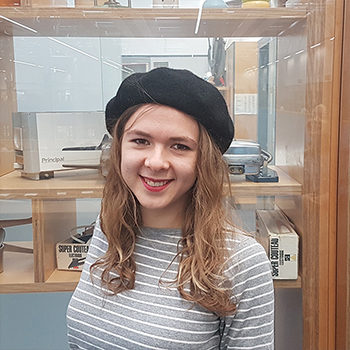Misleading product packaging
Project by Charlotte de Wit
Supervised by Rick Schifferstein
One of the main functions of product packaging is to inform consumers of their contents. However, because consumers often decide on the basis of their packaging whether they will buy the product or not, companies have also used the packaging design as a tool to seduce consumers to buy their product. As a consequence, the expectations elicited by the packaging may deviate from their factual correctness. Governments have tried to regulate the way in which consumers are informed by specifying rules on how information on particular product aspects on packages should be conveyed. Nonetheless, companies have shown extensive creativity in how to deal with such regulations.
In this project, Charlotte de Wit has distinguished between eight different forms of deception that have been used when designing food packages:
- Appearance deception: Food is presented much more favorably by using fancy looking pictures and seductive statements like artisanal, original or best quality.
- Composition deception: Only a tiny bit of the most expensive ingredient is used, but this ingredient largely determines the product name.
- Health deception: Healthy product options are often less tasty. As a consequence, producers may add lots of salt, fat or sugar to a product that contains a number of ingredients that portray a healthy image. However, due to the additions the product as a whole cannot be regarded wholesome anymore.
- Home brand deception: Home brands often offer similar quality as premium brands for a lower price. However, while most of the time buying home brands can save money, sometimes home brands cleverly hide the fact that their product is even more expensive than the premium brand.
- Product name deception: Food packaging laws protect certain product names. However, some companies may use names that are very similar to the protected names to trick their customers in buying a different product.
- Adjective deception: Similar to certain product names, also the use of some adjectives may be protected by law. For instance, in the Netherlands the term ‘whole grain’ is a protected claim for bread and can only be used if 100% whole grain is used. But many breads are called ‘brown’ or ‘multigrain’, which says nothing about the percentage of whole grain. In addition, the protection only applies to bread, so for pasta or cookies the term can be used without using 100% whole.
- Ingredient list deception: Laws prescribe that all ingredients must be listed in order from highest to lowest mass percentage on the package. If a certain ingredient is used or implied in the name of the product, its mass percentage needs to be mentioned. However, it is allowed to list a mixture as one ingredient, as long as the ingredients of the mixture are listed behind the mixture name in decreasing order and between brackets. In this way, it may seem as if a product contains a higher mass percentage of an ingredient. In contrast, to hide certain ingredients a different name may be used, so that consumers do not recognize it anymore. For instance, since many consumers are scared of eating additives with e-numbers, some producers rather give the full name of the additive. Or to disguise the high sugar content many variant names can be used, such as glucose, fructose, fruit concentrate, molasse, or caramel.
- Nutritional value table deception: In some cases producers decide to display only the nutritional value of the prepared product on the package, for instance for a sauce. This implies that the composition changes and that the total amount of salt, sugar and fat per 100 grams generally In cases where a lot of ingredients need to be added for preparation, like vegetables or chicken, these ingredients can make the nutritional value of the product look quite okay, while in fact the product itself has no healthy content at all.
Some of the existing tricks could also be used to change consumer behavior in a desirable direction. In this project, Charlotte made a meat packaging design that suggests a high meat content, while there is actually only 10 percent of meat in the product. In this way, people who are not willing to change their diet to become more healthy and save the envionment, can be tricked into eating less meat.
In June 2019 an exhibition was on display in the TU Delft library, explaining the eight different types of deception in food packaging design and showing the new deceiving meat packaging concept. Visitors had the possibility to leave their opinion about the presented design and its ethical implications.
June 5 till July 8, 2019 Exhibition: What do we eat? — Deceptions in food packaging design
You can also listen to Charlotte discuss her project during an NPO1 interview.
